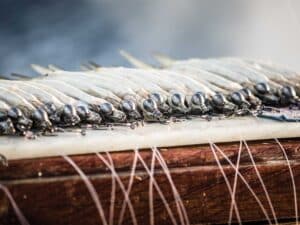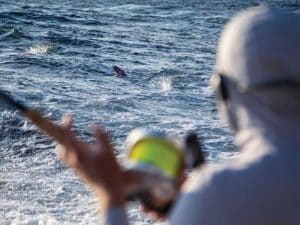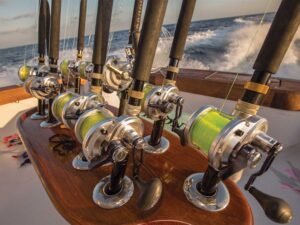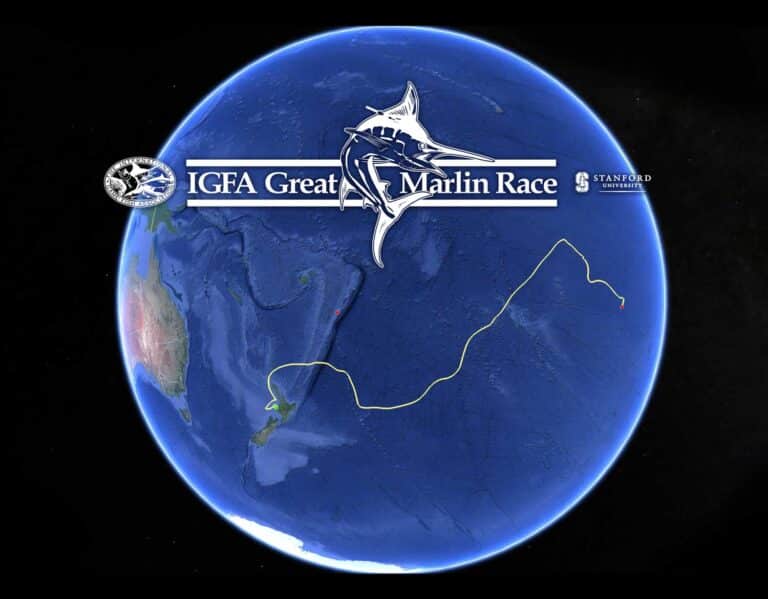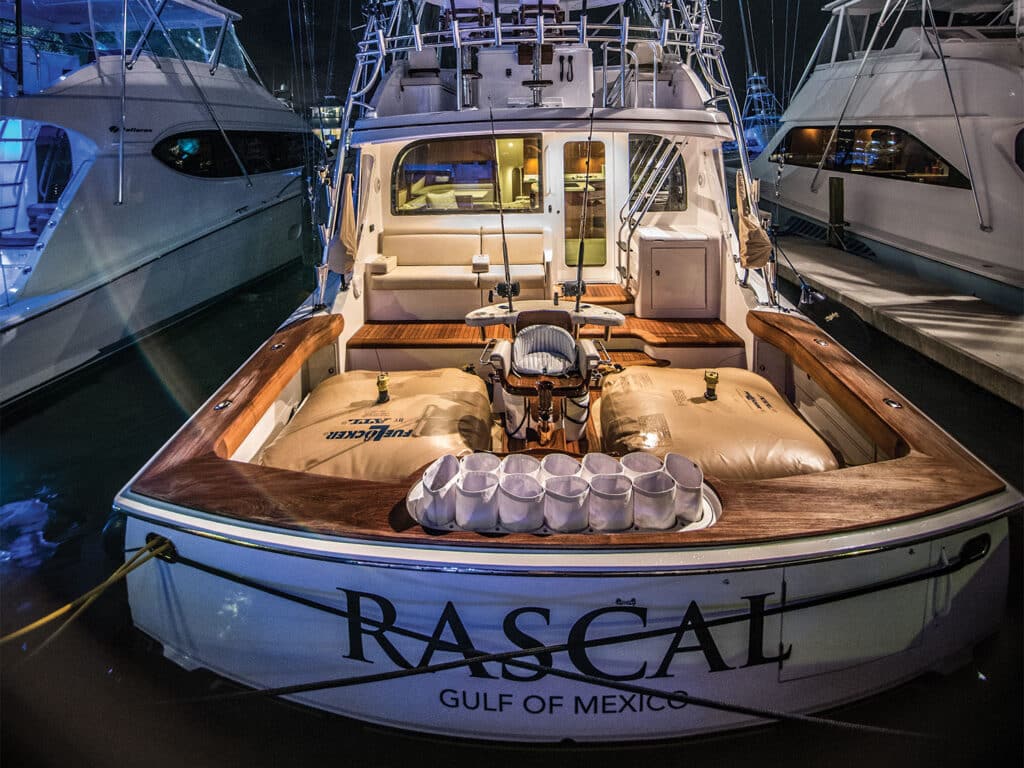
Subscribe to Marlin magazine and get a year of highly collectible, keepsake editions – plus access to the digital edition and archives. Sign up for the free Marlin email newsletter.
In his book Fishing the Atlantic, Kip Farrington Jr. credits Capt. Harry Driscoll from Beach Haven, New Jersey, with taking his charter boat on its own bottom to Bermuda in 1935. No doubt, Driscoll had plenty of extra petrol for his journey in metal drums on the long transit. From that time onward, into the 1990s, the 55-gallon drum remained the easiest solution, especially with the advent of the lighter plastic drum, which was significantly less harmful to the boat.
However, from the 1960s through the ’80s, some captains had custom aluminum tanks made to fit their cockpit. I recall some 43-foot Merritts and various Rybovich builds arriving in Isla Mujeres with these long tanks on either side of the fishing chair. They provided enough fuel for the boats to run the full length of the 350-mile trip from Key West. The Texans who crossed the Gulf to Cozumel or Isla had to carry fuel in drums or custom tanks as well.

Strategic Storage
The need to carry extra fuel is based on your boat’s onboard fuel capacity relative to the distance of your trip and the intended speed of your boat during the trip. Often we need to transit in a “weather window,” which usually means we have to make good time while we can, getting as many miles behind us in the shortest time. Many well-intentioned trips have started off great, with the weather changing en route, leading to either speeding up and burning more fuel to get ahead of the weather or slowing down and slogging it out to get through it.
Once you determine that you need to carry on-deck fuel, you’ll need to determine the best way to carry it on your boat, how to secure it and how to transfer it without a giant hassle while underway. Dealing with drums is not ideal, as they are cumbersome and take a good deal of effort to fully secure so they won’t move underway. There is usually no way to get all the fuel out of them, making more work upon arrival to drain them. Custom tanks or Chem-tainer-type tanks work well but are also cumbersome, and they completely block the cockpit from being used. So in the end, we find that fuel cell bladders are the best all-around option.
Aero Tec Laboratories Inc. is a leading manufacturer of marine fuel bladders. They’re available in a variety of sizes and can be easily carried on deck or on the bow. Using ratcheted straps and rope to secure the bladder from sliding around is the most practiced method. If you are constantly carrying extra fuel, consider a custom cell that fits in a place where it cannot move, such as a fish box, a livewell or the center of the engine room.
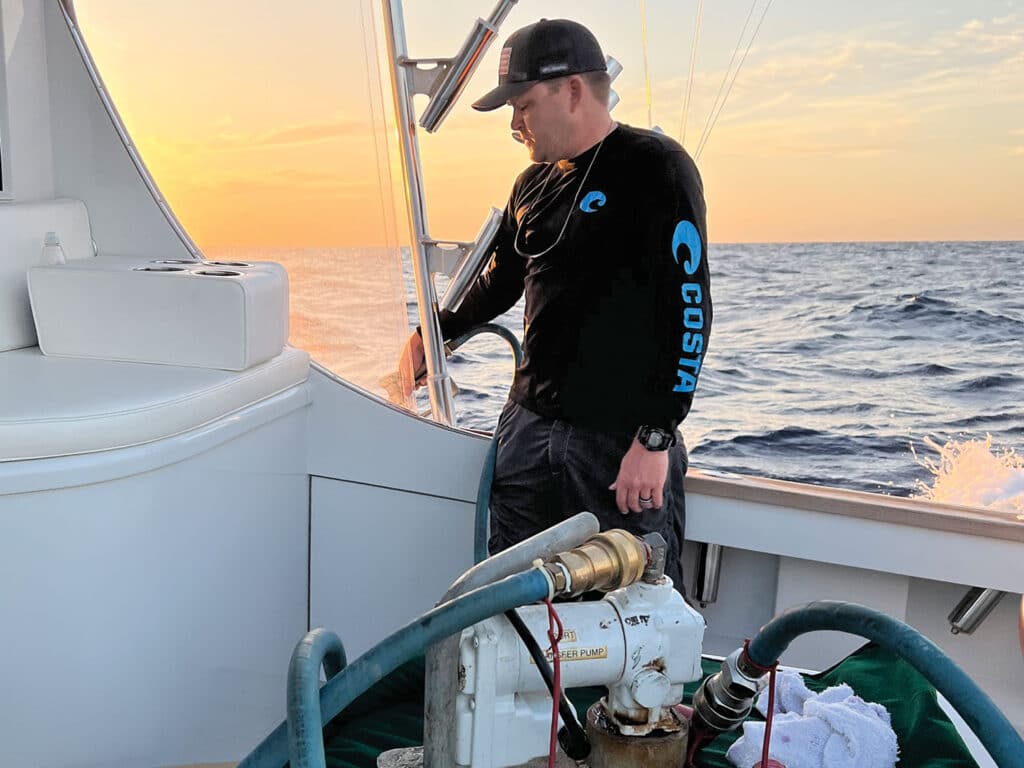
Making the Transfer
Setting up your boat to receive fuel while underway is a huge consideration if you want to have the best experience. If your boat offers access to the fuel connections at the tank and they have a clean-out access, the best way to transfer is to set up quick connects from the fuel bladder to a 12V or 24V Fill-Rite pump, then from the pump to the fuel connections at the tank. This method is basically direct from bladder to tank without exposing fuel. Keep in mind that this approach may be easier on larger boats. If building a boat, be sure the builder adds a clean-out pipe so you can flush and clean the tank and use it for transferring on-deck fuel.
It is best to have a piece of pipe about 10 inches tall threaded to fit into your fuel fill (where the cap goes) so that if you are taking a bit of spray or if it is raining, the water running down the gunwale will not run into the tank. Your nozzle can also sit in the pipe so you don’t have to hold it. This is also something we use while washing the boat and fueling at the same time. We also extend the power wires on the pump and use a Hubble plug that goes in our undergunwale kite or LP plugs, depending on the voltage to power the pump, without having to get to the batteries.
We typically run enough fuel out of the boat to drain the bladder so we can disconnect everything, remove the securing straps and ropes, and put everything away neatly so the cockpit or wherever the cell is placed is unencumbered. If you do spill a bit of fuel, be sure to clean it up right away, as it will spread with water and become incredibly slippery. Another benefit to the ATL bladders is that they can be stored easily when not in use.
Carrying extra fuel is very easy today with the tools we have available, allowing us to move and transfer fuel quickly and securely, and most importantly, allowing us to reach destinations previously unattainable with onboard fuel capacity.
